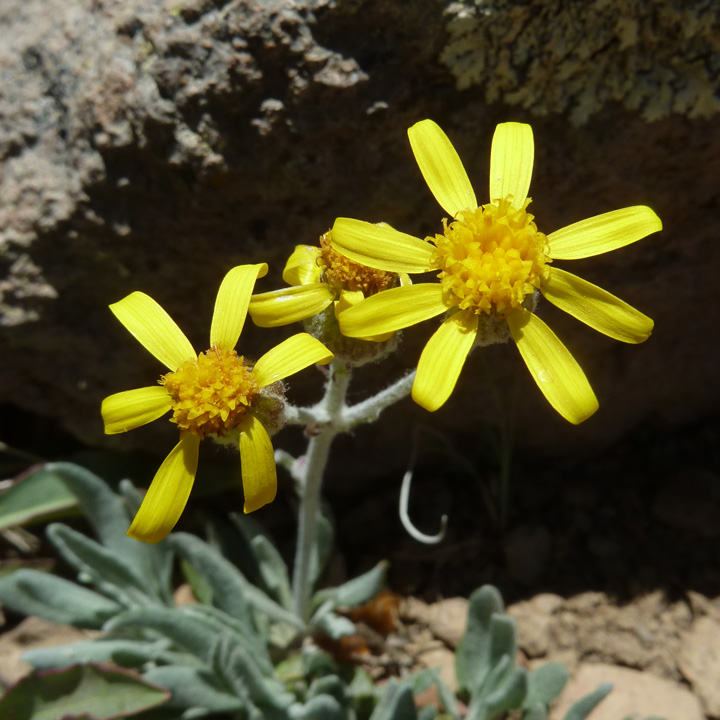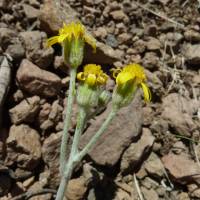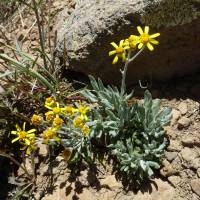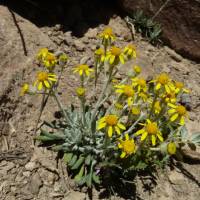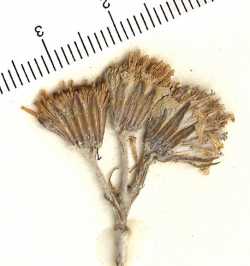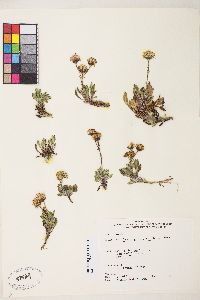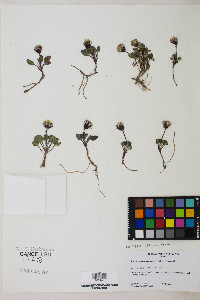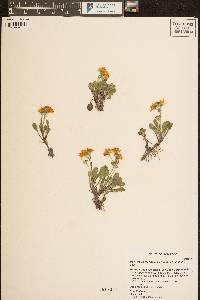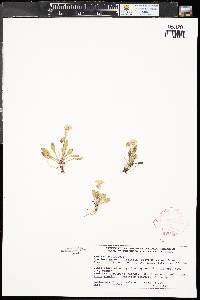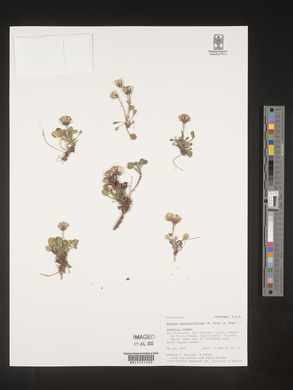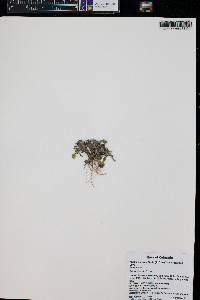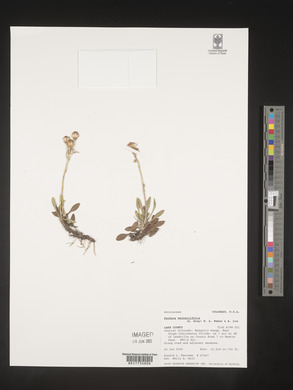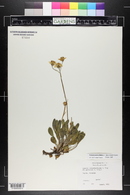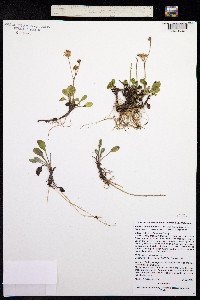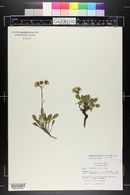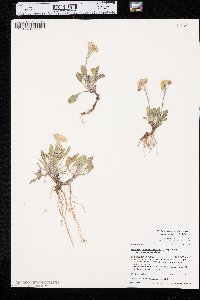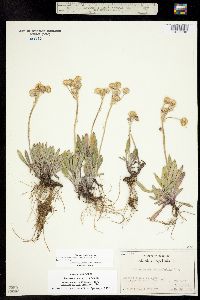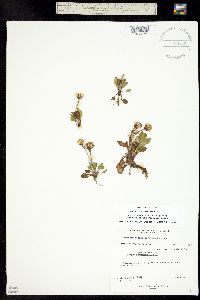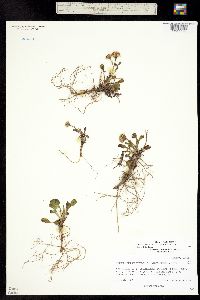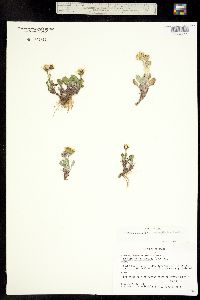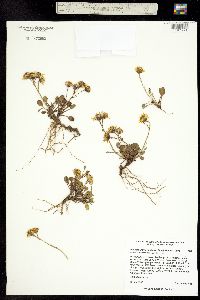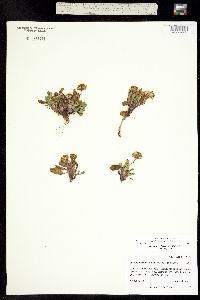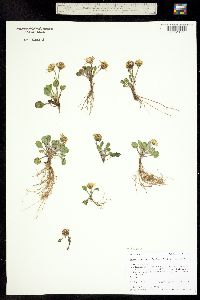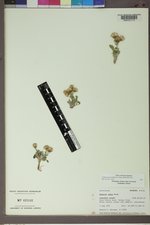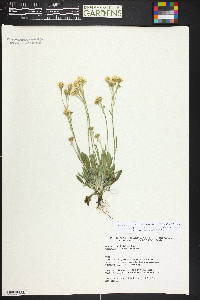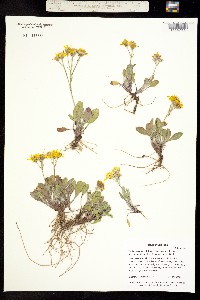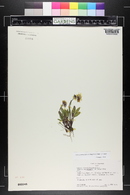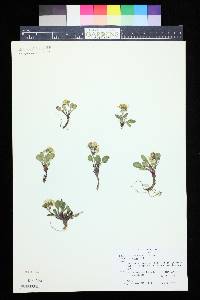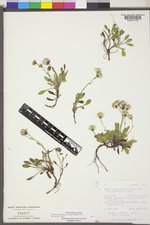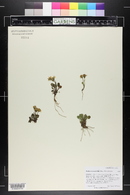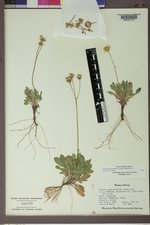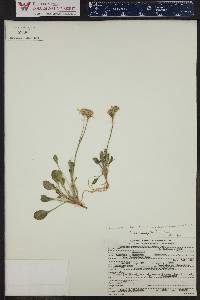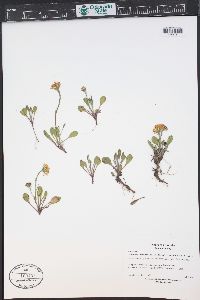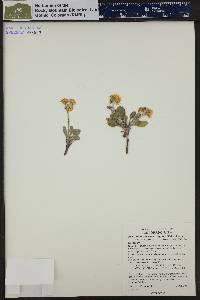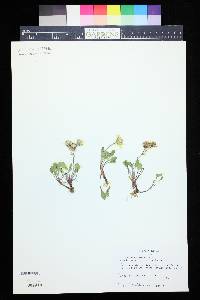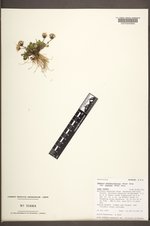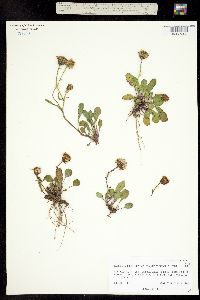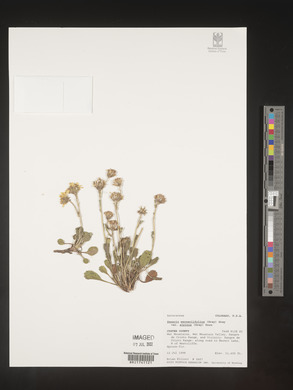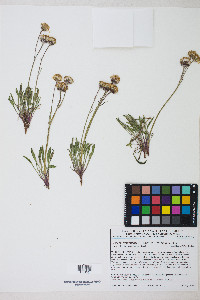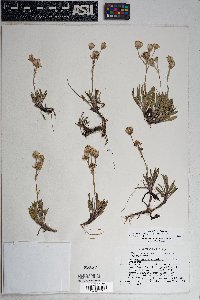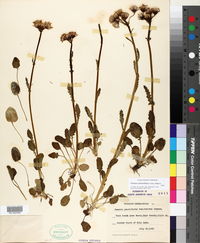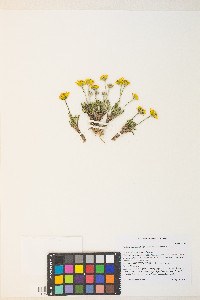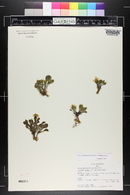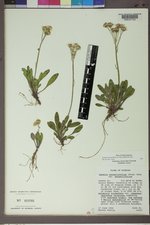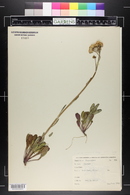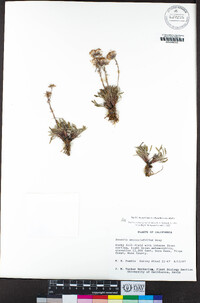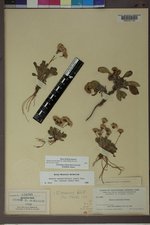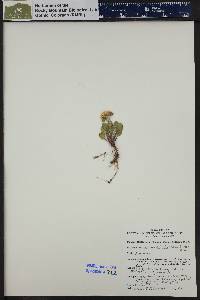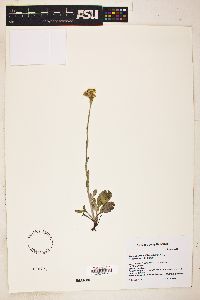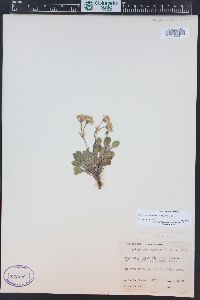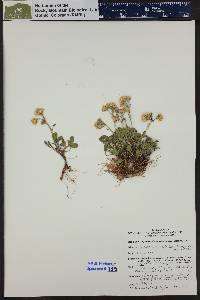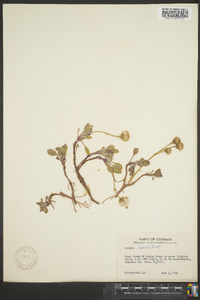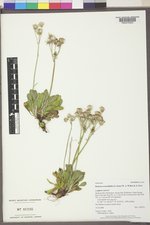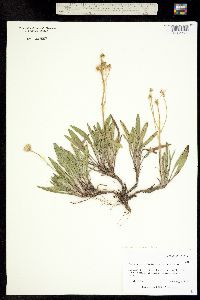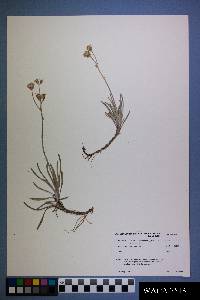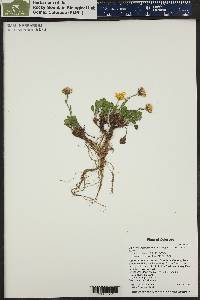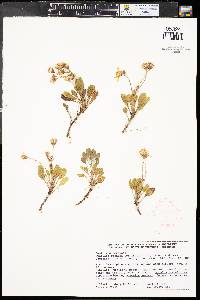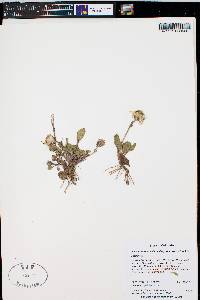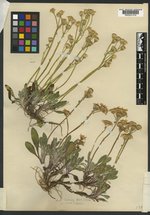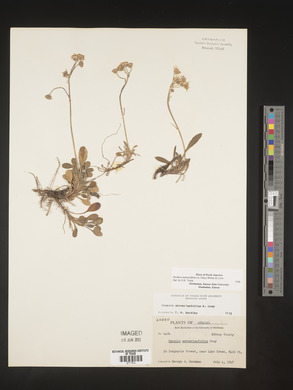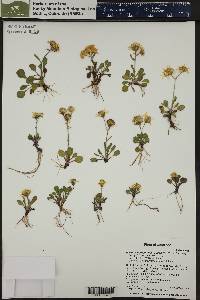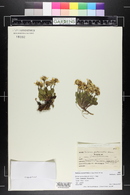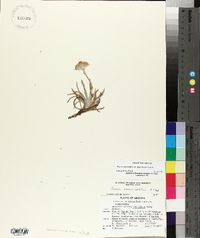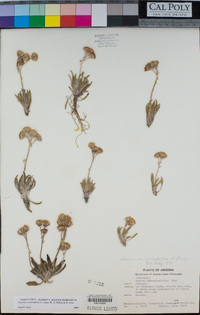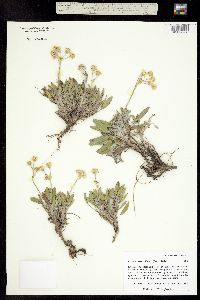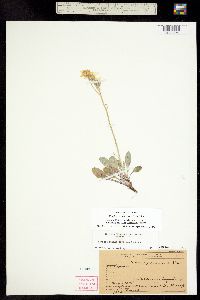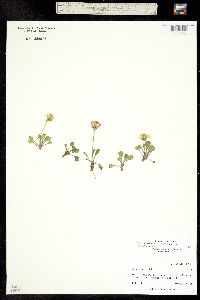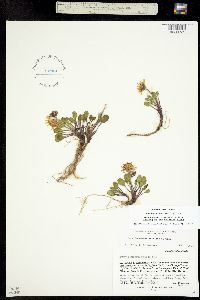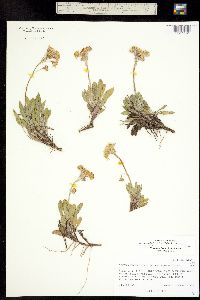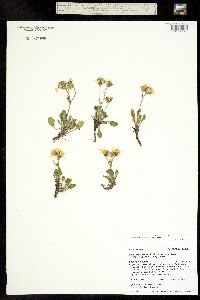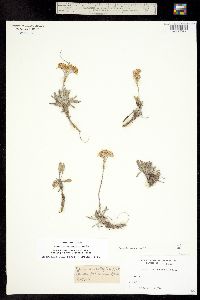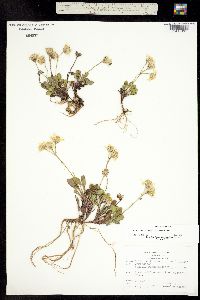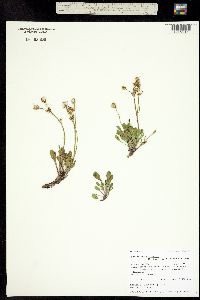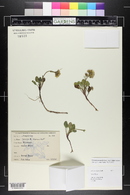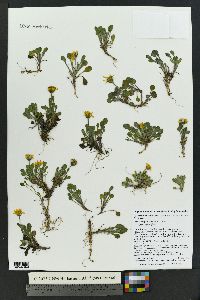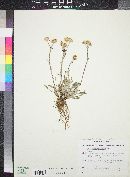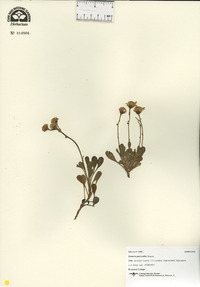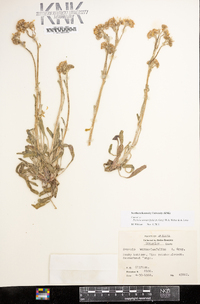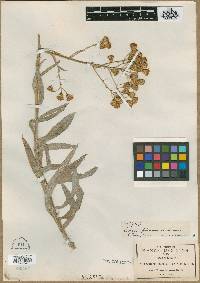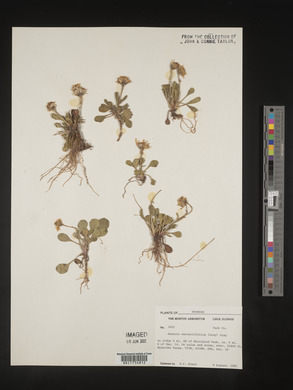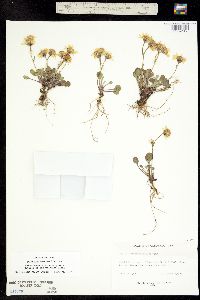
|
|
|
|
Family: Asteraceae
hoary groundsel, more...Rocky Alpine Groundsel
[Packera werneriifolia var. alpina (A.Gray) Dorn, moreSenecio alpicola , Senecio aureus var. werneriifolius A. Gray, Senecio molinarius Greenm., Senecio muirii Greenm., Senecio perennans , Senecio petrocallis Greene, Senecio pterocaulis , Senecio saxosus Klatt, Senecio saxosus var. toiyabensis Greenm., Senecio werneriifolius (A. Gray) A. Gray, Senecio werneriifolius var. alpinus (A.Gray) R.D.Dorn, Senecio werneriifolius var. barkleyi S.L. Welsh, Senecio werneriifolius var. incertus Greenm.] |
Perennials, 7-15+ cm; ± rhizomatous (rhizomes branched, sometimes densely crowded). Stems 1 or 3-5, clustered (often scapiform), usually floccose, lanate-tomentose, or canescent, sometimes glabrate. Basal leaves (either of two forms): usually (1) sessile, sometimes petiolate; blades narrowly lanceolate to elliptic, 15-40+ × 5-25 mm, bases tapering, margins entire or dentate toward apices (often revolute), sometimes (2) petiolate; blades ovate to orbiculate, 10-20 × 5-15 mm, bases tapering to abruptly contracted, margins entire or wavy, sometimes dentate toward apices. Cauline leaves abruptly reduced (bractlike). Heads1-5(-8) in cymiform to subumbelliform arrays. Peduncles inconspicuously bracteate, glabrous or densely hairy. Calyculi conspicuous (bractlets often cyanic). Phyllaries 13 or 21, green (tips sometimes cyanic), 4-10 mm, glabrous or hairy. Ray florets 0, 8, or 13; corolla laminae 5-10 mm. Disc florets 30-50+; corolla tubes 2.5-3.5 mm, limbs 3-4 mm. Cypselae 1.5-2 mm, glabrous; pappi 5-6 mm. 2n = 44, 46. Flowering mid Jun-mid Aug. Rocky talus slopes, sandy soils in forest openings near or above timberline; 2400-3700 m; Ariz., Calif., Colo., Idaho, Nev., N.Mex., Utah, Wyo. Packera werneriifolia is morphologically variable; it occurs throughout the central Rockies and, sporadically, as far west as the Sierra Nevada. Leaf morphology varies from ovate, elliptic, or narrowly elliptic in the Rockies to narrow with revolute margins in California and Arizona. All specimens are characteristically scapiform.
General: Perennial, 7-15+ cm tall; stems solitary or in clusters of 3-5, erect or ascending, more-or-less scape-like, thinly woolly-tomentose or finely grayish to white- pubescent, often becoming nearly glabrous; rhizomatous. Leaves: Basal and cauline, alternate, narrowly lanceolate, elliptic, ovate or somewhat round, 1-4 cm long, 0.5-2.5 cm wide, abruptly reduced and bract-like upward, thick, woolly-tomentose, becoming nearly glabrous with age, margins entire, wavy, or dentate towards the apex; basal blades petiolate or sessile, cauline blades sessile. Flowers: Heads 3-20 or more, in corymb-like to somewhat umbel-like arrays; bractlets subtending the involucre conspicuous; involucre campanulate, 4-7 mm long, 5-12 mm wide; phyllaries 13-21 in 1-2 series, green or yellowish, woolly-pubescent to nearly glabrous; ray flowers 8-13, 4- 10 mm long, yellow; disk flowers mostly 40-60, 5-7 mm long, yellow; flowers April-August. Fruits: Achene, 1.5-2 mm long, glabrous; pappus of numerous white bristles. Ecology: Talus slopes, exposed rocky habitats; 2300-3800 m (7500- 12500 ft); Apache, Coconino, and Mohave counties; western U.S. Notes: na Editor: Springer et al. 2008 |
This project was made possible in part by the Institute of Museum and Library Services [MG-70-19-0057-19].
Powered by Symbiota

